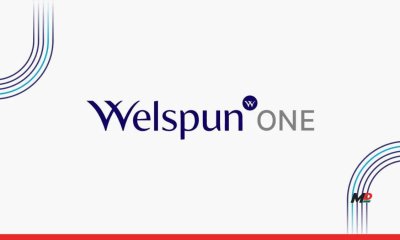Published
10 months agoon

By Ms. Aditi Nair, Chief People Officer at Practus
Learning is an ‘always on’ process and the mediums to learn can be numerous. A conversation with a colleague, a meeting with a leader in your organization, a book, a webinar, a panel discussion, or even a seemingly basic chat over lunch – all leave us with important lessons. Lifelong learning is essential for both personal and professional growth. In a world characterized by constant technological and market changes, it helps one be adaptable, resilient, and competitive.
For the global organizations of today, talent development is crucial. It helps bridge skill gaps, enhances employee engagement, drives productivity, and ensures long-term growth. For individuals, talent development improves employability, career progression, and resilience even in an unpredictable job market. For organizations, it translates into a skilled workforce that can innovate, solve complex problems, and respond to challenges promptly and effectively.
With rapidly evolving technology, changing business dynamics, automation, and AI, traditional roles are changing. This is leading to increased requirement for reskilling and upskilling, so that the workforce can leverage technology and complete tech-driven tasks easily. Alongside, globalization has made the market more competitive and that has increased the demand for cross-cultural collaboration. Hence, organizations must innovate quickly. Additionally, we cannot ignore the changing workplace that is being defined by remote work, digital transformation, and revamped leadership structures and communication approaches. These changes have made it all the more essential for organizations to ensure continuous learning.
Consider a workplace from two decades back. Then, one could rely on a singular skillset for a fulfilling and long career. However, that is not a possibility today. Most jobs and organizations demand adaptability and upskilling. Hence, learning is ongoing – be it in the form of formal education, professional courses, online courses, or on the job training.
On the other hand, a robust learning culture makes employees feel valued. In fact, top talent often opt for companies that offer opportunities for skill development and career advancement. Continuous development opportunities makes a company a desired place to work, resulting in improved talent acquisition and retention. According to LinkedIn Learning, 94% of surveyed employees would stay at a company longer if it invested in their learning and development.
The commitment towards a culture of continuous learning has to be built top down. A collaborative learning culture begins with the leadership and their commitment to invest in themselves and their teams. When a leader prioritizes learning, the entire organization follows suit.
“Student for Life” – one of our key people philosophies embodies this commitment. Continuous learning is deep-rooted in our organization’s DNA and is an integral part of the company’s vision and mission.
According to World Economic Forum’s Future of Jobs 2023 report, by 2027, businesses predicted that 44% of workers’ core skills will be disrupted, because technology is moving faster than companies can design and scale up their training programs. Hence, for holistic learning and growth, we must look beyond quarterly reviews, including catch phrases on careers pages, and adding line items to company’s annual report. We have to embrace the process and encourage everyone to join in.
Organizations must provide a collaborative environment where employee involvement is paramount. Personalizing training needs identification outcomes has been one of my focus areas. To prioritize it, utilizing structured programs, such as the 4×4 matrix to assess employees on performance and potential, and tailoring development plans addressing both, professional and personal growth aspirations becomes important. Having an L&D policy with an opt-in element, where employees can choose training programs and certifications aligned with their interests, with the company reimbursing the costs is a great way to foster a democratic learning environment, making learning accessible to all. This empowers teams to take ownership of their learning journeys.
I have always been a proponent of striking a balance among skill building, knowledge enhancement, and practical application. If teams do not get the opportunity to apply their learnings to attain real-world results for themselves and the company, then the true purpose of continuous learning remains unachieved. At an organizational level, we launched Gurukool, in October 2023, as a structured L&D initiative, focused on collaborative and experiential learning. Powered by our innovative SLIP model – Skillset (technical and functional), Leadership Development, Industry-focused training programs, Professional consulting skills – this initiative offers our employees a unique learning path in the form of classroom-based workshops to learn through live case studies and gain hands-on experience.
Over the course of my professional career, I have witnessed the transformative power of collaborative learning firsthand. For HR and leadership teams, building this culture is an ongoing responsibility. Leaders will have to encourage a ‘student for life’ mindset, create peer-to-peer knowledge-sharing avenues, help team members with personalized learning journeys, and create a supportive environment that inspires collective ideation and innovation. When employees are empowered to own their learning paths, their transformation and development become their individual aspirations for growth, and that transcends HR-driven agenda. And while execution is critical, it is equally essential to track impact and celebrate milestones to stay efficient in the journey towards nurturing talent continuously.


India’s Growth Engines Awarded: Most Preferred Workplaces 2025 Set New People-Centric Benchmarks


India’s Growth Engines Awarded: Most Preferred Workplaces 2025 Set New People-Centric Benchmarks


CBI books Anil Ambani’s son, RHFL in ₹228 Crore bank fraud case


Quick-Commerce Heading for Shakeout as Funding Model Fails, Warns Blinkit CEO


Venkatesh Iyer never looked at us during trials and I thought he was someone with a lot of attitude : Abhishek Nayar


Welspun One expands footprint with 46-acre Talegaon MIDC project; unveils ~INR 550 crore plan for a next-generation logistics park

